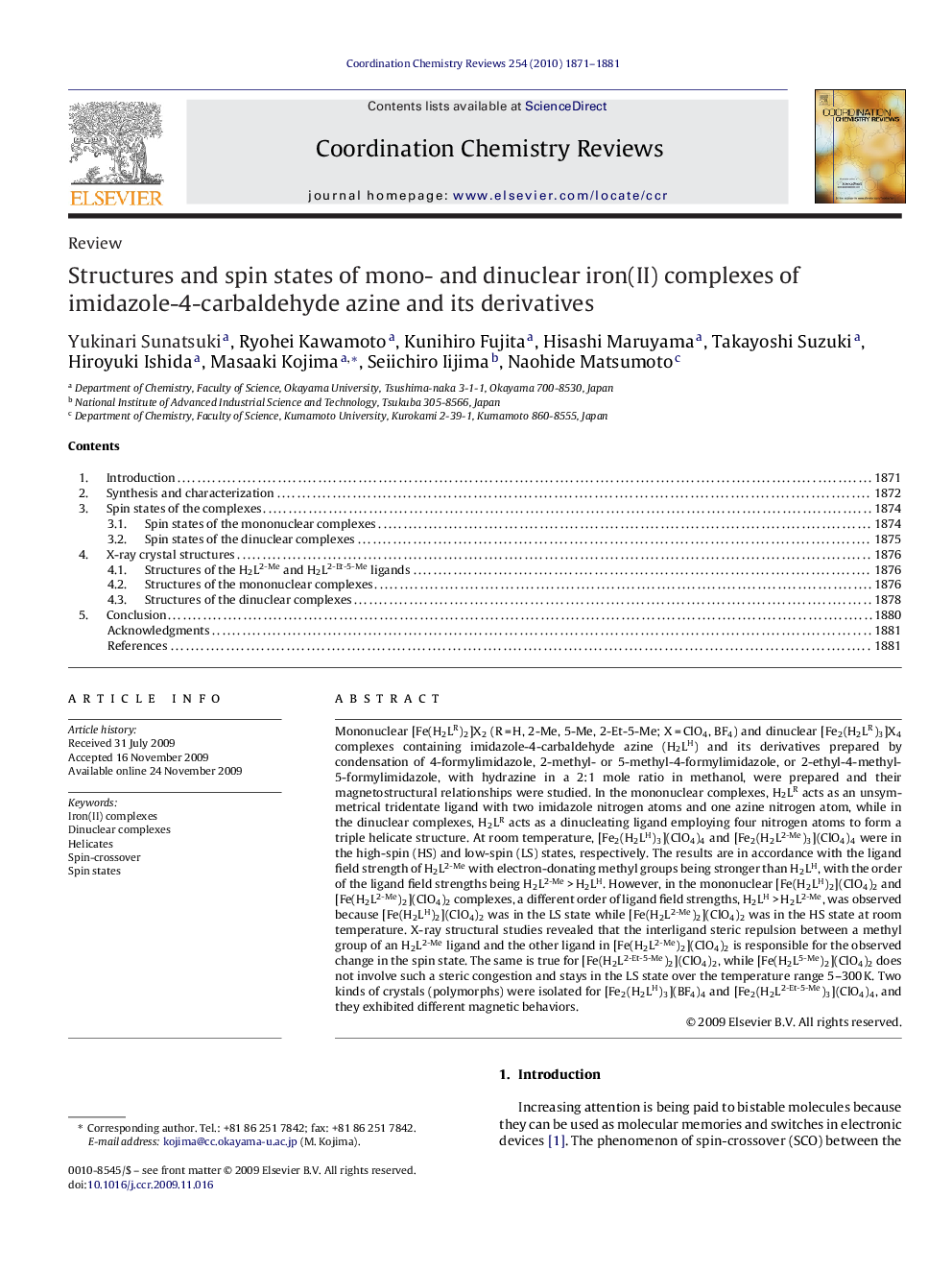| کد مقاله | کد نشریه | سال انتشار | مقاله انگلیسی | نسخه تمام متن |
|---|---|---|---|---|
| 1300254 | 1498792 | 2010 | 11 صفحه PDF | دانلود رایگان |

Mononuclear [Fe(H2LR)2]X2 (R = H, 2-Me, 5-Me, 2-Et-5-Me; X = ClO4, BF4) and dinuclear [Fe2(H2LR)3]X4 complexes containing imidazole-4-carbaldehyde azine (H2LH) and its derivatives prepared by condensation of 4-formylimidazole, 2-methyl- or 5-methyl-4-formylimidazole, or 2-ethyl-4-methyl-5-formylimidazole, with hydrazine in a 2:1 mole ratio in methanol, were prepared and their magnetostructural relationships were studied. In the mononuclear complexes, H2LR acts as an unsymmetrical tridentate ligand with two imidazole nitrogen atoms and one azine nitrogen atom, while in the dinuclear complexes, H2LR acts as a dinucleating ligand employing four nitrogen atoms to form a triple helicate structure. At room temperature, [Fe2(H2LH)3](ClO4)4 and [Fe2(H2L2-Me)3](ClO4)4 were in the high-spin (HS) and low-spin (LS) states, respectively. The results are in accordance with the ligand field strength of H2L2-Me with electron-donating methyl groups being stronger than H2LH, with the order of the ligand field strengths being H2L2-Me > H2LH. However, in the mononuclear [Fe(H2LH)2](ClO4)2 and [Fe(H2L2-Me)2](ClO4)2 complexes, a different order of ligand field strengths, H2LH > H2L2-Me, was observed because [Fe(H2LH)2](ClO4)2 was in the LS state while [Fe(H2L2-Me)2](ClO4)2 was in the HS state at room temperature. X-ray structural studies revealed that the interligand steric repulsion between a methyl group of an H2L2-Me ligand and the other ligand in [Fe(H2L2-Me)2](ClO4)2 is responsible for the observed change in the spin state. The same is true for [Fe(H2L2-Et-5-Me)2](ClO4)2, while [Fe(H2L5-Me)2](ClO4)2 does not involve such a steric congestion and stays in the LS state over the temperature range 5–300 K. Two kinds of crystals (polymorphs) were isolated for [Fe2(H2LH)3](BF4)4 and [Fe2(H2L2-Et-5-Me)3](ClO4)4, and they exhibited different magnetic behaviors.
Journal: Coordination Chemistry Reviews - Volume 254, Issues 15–16, August 2010, Pages 1871–1881